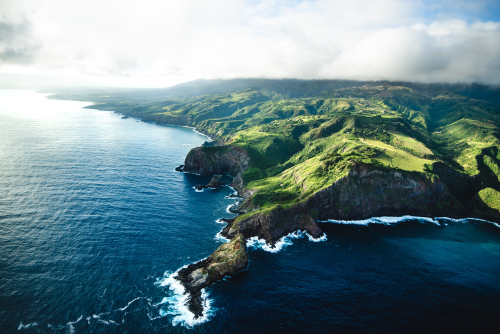New rules for the Navy
LIHUE — Federal ocean management officials have tightened up on rules for U.S. Navy training and testing in the Hawaii-Southern California area at the same time the Navy is proposing increased activities around Hawaii.
The more stringent National Oceanic and Atmospheric Administration rules include shutting down sonar when marine mammals are in the area, waiting for animals to leave the training area before using in-water explosives, and following protocols to reduce the number of ship strikes of sea animals.
Also, NOAA is now requiring the implementation of a reporting and notification plan for animals struck or found dead, and limiting operations for areas that are biologically important — areas where marine mammals reproduce, migrate or forage.
Kauai waters aren’t on the list of “biologically important areas,” according to Jennie Lyons, public affairs officer for NOAA, who confirmed Thursday, “there is no special mitigation area off Kauai.”
“Biologically sensitive areas are more protected than ever before, and we added areas where no explosive or sonar use can happen. We also reduced times allowed for exercises as a whole,” she said.
Meanwhile, the Navy has been working on increasing special operations training actives in the training area, a proposal that’s been open for public comment since the beginning of November.
Deadline for public comment on the Draft Environmental Assessment for Naval Special Operations Training is January 7, and the proposal is to conduct small-unit land and maritime training activities for Naval special operations personnel in the nearshore waters and land-based areas on Oahu, Hawaii, Kauai, Maui, Molokai and Lanai.
Thursday, the NOAA National Marine Fisheries Service issued final authorizations for the Navy in terms of incidental take of animals during their Hawaii-Southern California training and testing activities.
This is the third in a series of five-year incidental take regulations for the Navy’s Hawaii-Southern California training and testing activities.
NOAA staff members say the final regulations put in place measures that are more protective and include a larger area than those in the proposed or previous regulations.
“The Navy has balanced our conservation requirements for marine mammals with their critical national security requirements for training and military readiness. As the acting NOAA administrator and a retired Navy admiral, I know this is a win-win for marine mammal protection and national defense,” said Timothy Gallaudet, Ph.D., acting undersecretary of commerce for oceans and atmosphere at NOAA.
The Marine Mammal Protection Act and Endangered Species Act allow NMFS to evaluate the effects of human activities on protected marine resources and species, and allows NMFS to require modification of activities to reduce those effects.
In this instance, NOAA is imposing stringent mitigation measures expected to reduce adverse impacts to marine mammal stocks and their habitats as well as listed species.
In addition, the anticipated take of marine mammals over the five-year period includes disruption of behavioral patterns or temporary hearing impairment, as well as some significantly lesser number of injuries and a very small number of mortalities. The authorization will be in place through December 2023.
“NOAA has been working with the Navy for more than 10 years to understand the effects the Navy’s testing and training has on marine mammals and, over time, we have steadily increased the protections in place,” said Donna Weiting, director of NMFS’s Office of Protected Resources.
NOAA and the Navy worked together to develop a robust monitoring plan, with associated strict reporting measures, according to NMFS.
Additionally, the final rule includes an adaptive management component that allows for modification of monitoring measures based on new information.
The public still has a chance to comment on the Draft Environmental Assessment for Naval Special Operations Training, which has a deadline of January 7. A digital copy of the Draft EA was made available for public review on the Naval Facilities Engineering Command, Pacific website at bit.ly/2Gg5ghc.

